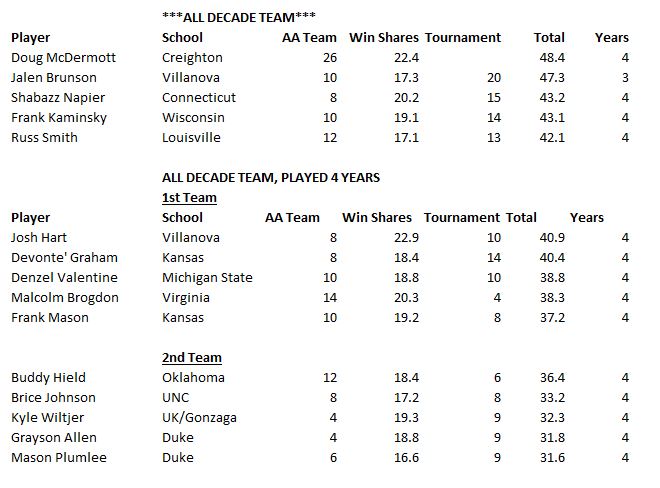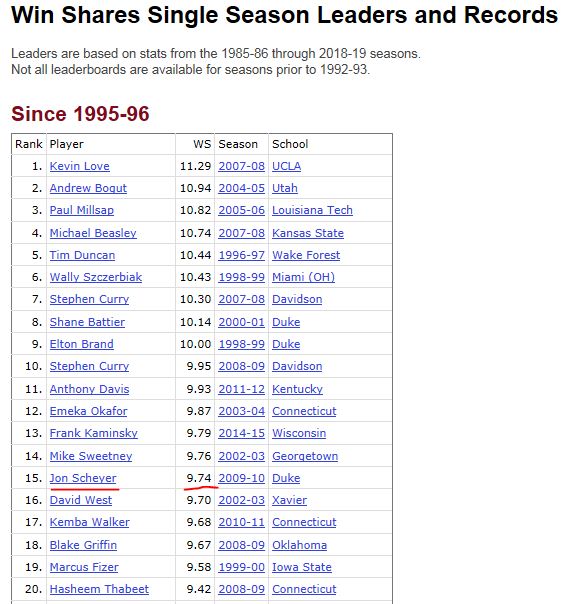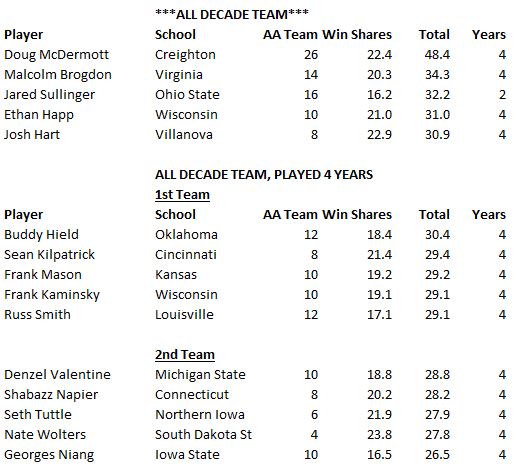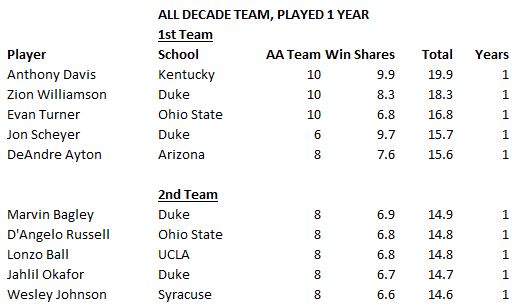


First of all, you're welcome.
Second, I'm sure you might be wondering how the scoring is calculated:
-AA= All American Team. (10 for AP NPOY, 8 for 1st Team, 6 for 2nd Team, and 4 for 3rd Team). Doug McDermott had the highest point total of all players simply due to being a 3-time 1st Team All-American.
-Win Shares is pretty clear. Just based on the total number of Win Shares that a player produced
-Tournament points: 10 points for NCAA Champs, 8 for Runners-up, 6 for Final Four, 4 for Elite 8. If player did not start on a particular team, they only receive half of those points (ie Luke Maye in '17, Mikal Bridges in '16, and Grayson Allen in '15)
-If a player is near the top of all 3 categories, you can expect his numbers to be around 10 for one specific season (see Anthony Davis in 2012). That was the basis for my scoring system. Technically, I could have added on more points like AP Honorable Mention All American + tournament wins in round 1/2. But I felt like that wouldn't have significantly altered the overall numbers. I saw it as diminishing returns.
-In order to qualify for scoring, players had to make one of the 3 AP All-American Teams. I totaled all 1st Team selections. After that, 2nd or 3rd Team calculations were included if they were an All-American more than once, or if they played in at least 1 Regional Final.
Last edited:






